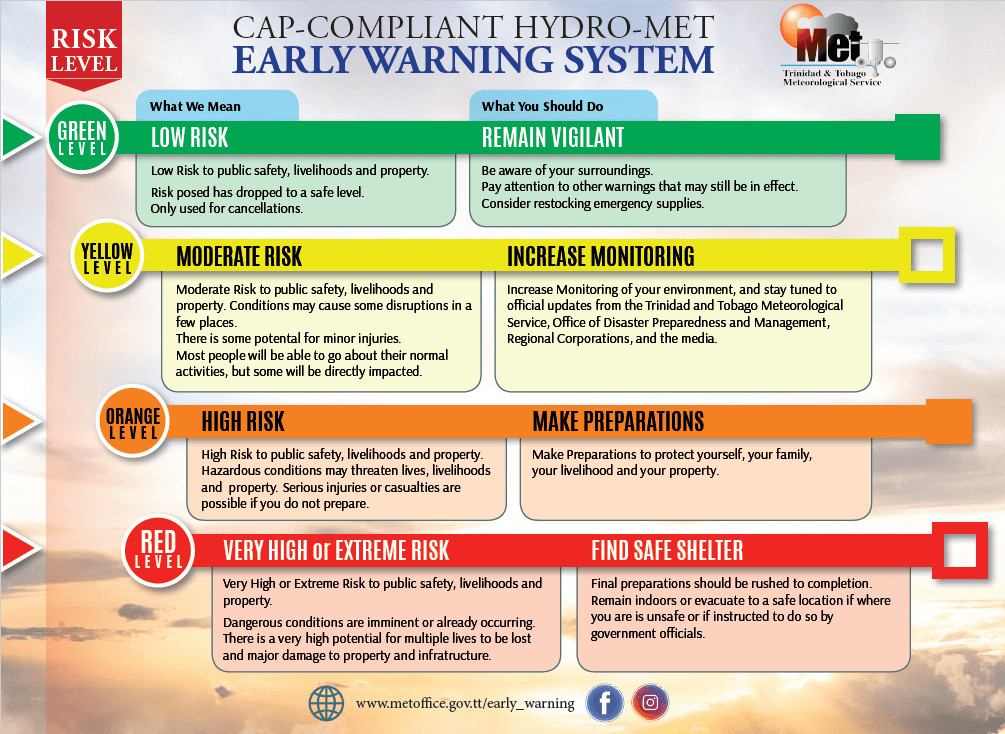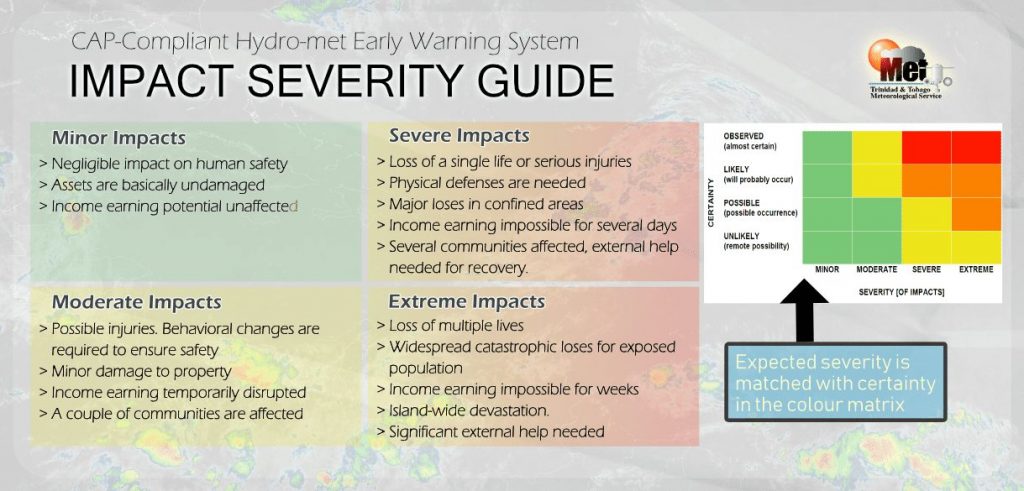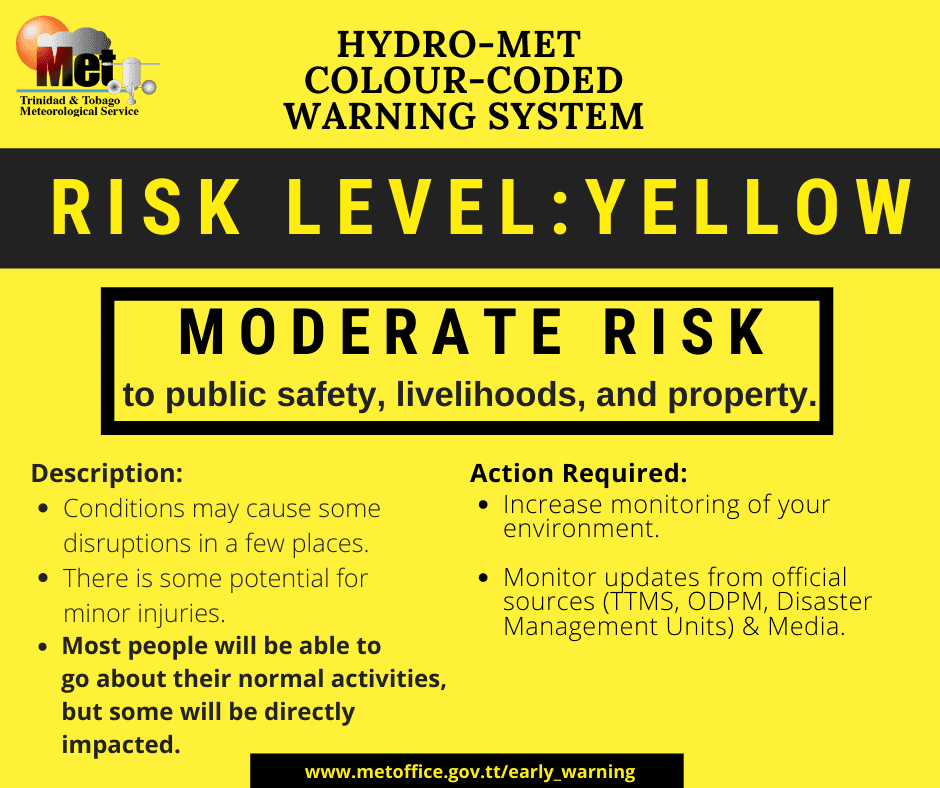A combination of long-period swells and spring tides will result in hazardous seas this weekend, prompting the Trinidad and Tobago Meteorological Service (TTMS) to issue a Hazardous Seas Alert for this short-lived event.
What you need to know
— What is happening: Long-period swells between 12 and 15 seconds are moving in from the north and are forecast to briefly affect northern and eastern coastlines, combining with spring tides ongoing through October 20th.
— What can we expect: Open water waves are forecast to remain up to 1.5 meters, while swells and spring tides are forecast to produce occasional large, battering waves in nearshore areas through Sunday night, according to the alert. However, forecast models show occasional high-energy swells continuing through the end of next week. There is an increased risk of rip currents and potentially dangerous conditions for small craft operators.
Latest Alerts
TTMS Issues Adverse Weather Alert For T&T
Trinidad and Tobago is NOT under any tropical storm or hurricane threat, watch, or warning at this time.
The Hazardous Seas Alert
The Trinidad and Tobago Meteorological Service issued a Hazardous Seas Alert (Yellow Level) on Thursday at 1:41 PM. Update: Once the alert was issued, it was immediately amended by the Trinidad and Tobago Meteorological Service. The alert now goes into effect for northern and eastern coastal areas of Tobago and, to a lesser extent, Trinidad at 2:00 AM Saturday, October 19th, 2024. It remains in effect through 11:00 PM Sunday, October 20th, 2024.


“Long-period northerly and north-easterly swells are expected to produce large breakers to affect near-shore northern and eastern coastal areas of Tobago and Trinidad (to a lesser extent). Although the event is expected to be short-lived, impacts include battering waves, exacerbated at high tides, along affected shorelines. Near-shore activities, including fishing, swimming, and boat moorings, can be disrupted,” according to the Trinidad and Tobago Meteorological Service.

The alert’s color indicates the event’s severity and probability of the event occurring. Currently, the alert level is Yellow. This means that the hazards are likely, and the severity of impacts is moderate for this particular alert.
There is an increased risk of strong rip currents, which pose a serious hazard to swimmers and beachgoers. Rip currents can be life-threatening even for experienced swimmers. Agitated seas will likely be particularly dangerous for offshore activities, including fishing and other small craft marine interests. Due to spring tides, conditions at seawalls along affected coastlines can be exacerbated, especially at high tide.
For a moderate Hazardous Seas Alert, there is the potential for possible injuries, where behavioral changes are required to ensure safety. There may be minor damage to property, with income-earning temporarily disrupted and a couple of communities affected.
The Met Office advises all marine interests to monitor sea conditions and exercise caution along affected areas. Limit marine activities where possible. Fisherfolk are also advised to take the necessary precautions to secure their vessels.












